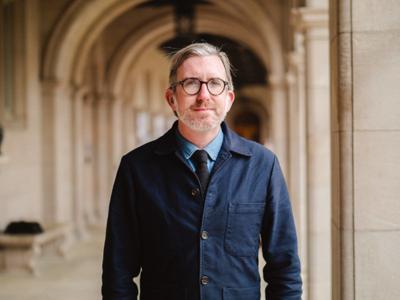I first met Alderman Sam Moore in 2007, when I was a freshman building preservationist tilting at windmills as much to learn how to tilt as to strike the windmills. Moore had just taken office and had pressed the city’s Land Reutilization Authority to demolish some 39 vacant historic buildings in The Ville neighborhood. The volume of this request was astounding, but not the reasons why. The Ville had far more than 39 vacant buildings, and saviors were either invisible or non-existent.
At the Preservation Board’s meeting considering the demolition, I joined other advocates for conserving built heritage in urging a rejection of the request on the grounds that many of these buildings were in good condition and that the Ville never had the chance to explore historic tax credits. The Ville was a local historic district, making demolitions tougher, but not a national one, which would bring state and federal financial incentives for those scarce saviors.
Moore was a shock. When he took to the rostrum to make the case for demolition, he did not repeat the lines I had heard many times – that the buildings were far from saving, that they were threats to public safety or that they were not important. Instead, Moore offered an elegy of sorts, starting by acknowledging how these buildings were built better than anything we would ever see rise in the city again. These buildings also stored more history than anyone in the room could ever learn. Moore valued the buildings as cultural and economic assets.
However, he stated that nothing had been done to save the buildings in all the years since the Ville first became a historic district in 1989 except talk. He didn’t want to tear them all down, but he was elected to do more than talk and, in the absence of a parade of saviors, thought that the most reasonable course was to demolish these buildings and work to keep the occupied ones around them from being abandoned.
The Preservation Board approved some demolitions, but denied others. Moore was not upset, but pragmatic. He approached then-Cultural Resources Office Director Kate Shea and me after the meeting and asked whether, since we thought the buildings were worth saving, we could figure out how to do that. Shea took the lead and found funding for a new survey of Ville buildings, which I ended up conducting with architectural historian Lynn Josse. In the end, we examined almost 400 buildings and were able to create small historic districts giving 96 buildings a chance for historic tax credits.
Moore was supportive of the survey and the national historic district designations at every turn. However, he warned us that what we wanted to do would be hard because we were only designating buildings. We had no power to reverse the denial of capital to his ward, a project that white St. Louis had been inflicting since before World War II. Moore was willing to give a dreamy view of preservation a shot with grace, but he was not blind.
In ensuing years, we joined forces to fight illegal brick theft, garnering a few joint media appearances and seemingly little to show except for battle stories. Moore was right. Making the case that St. Louis should care about the future of a single building in North St. Louis was difficult. Sadly, it was even more difficult to get the city to care about an entire neighborhood, let alone an entire half of a city. As time went on, Moore showed me that the buildings I had set out to preserve were just evidence of concentrated deprivation of people.
When Moore stood on the floor of the Board of Aldermen and showed large images of the conditions in his ward, he was reminding the city that it was running from a long-needed reckoning. If the images of broken walls, boarded windows and overgrown lots seemed dreadful, they just pointed to ten thousand decisions to move out when a black family moved next door, to deny a mortgage or sale to a black family, to turn a blind eye to mob violence, and to grant favors to projects across town profiting the same people who refused to invest in The Ville.
Moore reminded us that these actions are not just in the past but ongoing, and the landscape of North St. Louis is the public record. The buildings are just signs for how the leaders of this city are treating people. We can’t fix buildings and expect much to change. We must change the way we treat people. On the cusp of a mayoral election, Moore’s legacy urges us to remember that St. Louis won’t be a whole city until North St. Louis is a record of equity and justice.
Michael R. Allen is director of the Preservation Research Office and senior lecturer in Architecture, Landscape Architecture and Urban Design at Washington University in St. Louis.


















(0) comments
Welcome to the discussion.
Log In
Keep it Clean. Please avoid obscene, vulgar, lewd, racist or sexually-oriented language.
PLEASE TURN OFF YOUR CAPS LOCK.
Don't Threaten. Threats of harming another person will not be tolerated.
Be Truthful. Don't knowingly lie about anyone or anything.
Be Nice. No racism, sexism or any sort of -ism that is degrading to another person.
Be Proactive. Use the 'Report' link on each comment to let us know of abusive posts.
Share with Us. We'd love to hear eyewitness accounts, the history behind an article.